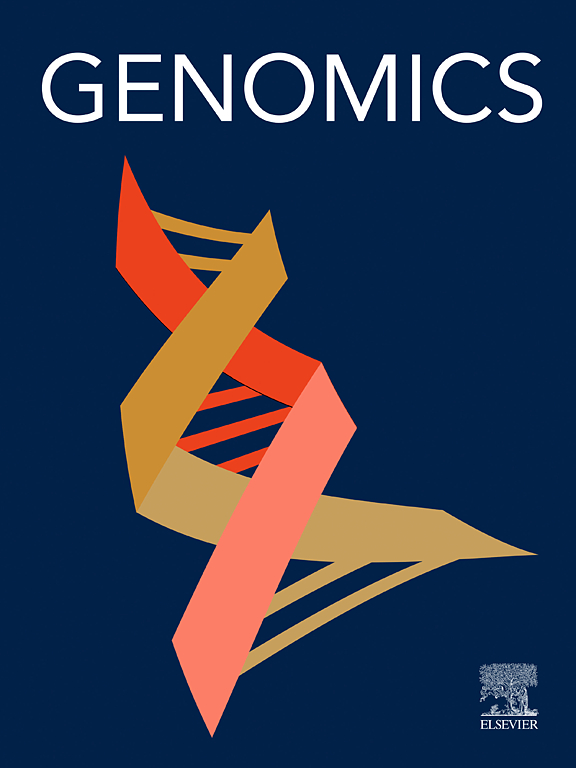参与大黄蒽醌生物合成的候选 bZIP 转录因子的转录组比较分析和鉴定
IF 3.4
2区 生物学
Q2 BIOTECHNOLOGY & APPLIED MICROBIOLOGY
引用次数: 0
摘要
大黄是中国的传统药用植物,其药理作用主要来源于其蒽醌类化合物。然而,人们对影响大黄蒽醌生物合成的调控机制仍然知之甚少。我们利用单分子实时(SMRT)测序技术构建了高质量的全长转录组。根据全长转录组确定了 274 个可能参与蒽醌类化合物生物合成的单基因,包括莽草酸、多酮、MVA 和 MEP 途径中的单基因。通过新一代测序(NGS)鉴定了MeJA处理诱导的差异表达基因(DEGs)和不同组织间的差异表达基因,揭示了可能参与蒽醌类化合物生物合成的基因。系统鉴定了欧当归的碱性亮氨酸拉链(bZIP)转录因子。通过差异表达、共表达和蛋白质相互作用分析,系统鉴定了 RobZIP50 和 RobZIP53 等关键基因,发现它们与 R. officinale 的蒽醌生物合成有关。RobZIP50 和 RobZIP53 在根和根茎中高表达,并在 MeJA 处理 12 小时后显著增加。此外,RobZIP50和RobZIP53都只定位于细胞核中,其中RobZIP53表现出显著的转录活性。综上所述,我们的研究结果表明,RobZIP53 可能在调控 R. officinale 的蒽醌生物合成中发挥作用。本文章由计算机程序翻译,如有差异,请以英文原文为准。
Comparative transcriptome analysis and identification of candidate bZIP transcription factors involved in anthraquinone biosynthesis in Rheum officinale Baill
Rhubarb is a traditional medicinal plant in China, whose pharmacological effects derive mainly from its anthraquinones. However, the regulatory mechanism affecting anthraquinone biosynthesis in R. officinale remains poorly understood. We assembled a high-quality, full-length transcriptome using single-molecule real-time (SMRT) sequencing. 274 unigenes potentially involved in the biosynthesis of anthraquinones, including those in the shikimate, polyketide, MVA and MEP pathways, were identified based on full-length transcriptome. Differentially expressed genes (DEGs) induced by MeJA treatment and DEGs between different tissues were identified through next-generation sequencing (NGS), revealing the genes that may be involved in the biosynthesis of anthraquinones. The basic leucine zipper (bZIP) transcription factors of R. officinale were systematically identified. Key genes such as RobZIP50 and RobZIP53 were systematically identified and found to be associated with anthraquinone biosynthesis in R. officinale through differential expression, co-expression and protein interaction analyses. RobZIP50 and RobZIP53 were highly expressed in roots and rhizomes, and significantly increased after 12 h of MeJA treatment. Additionally, both RobZIP50 and RobZIP53 were localized exclusively in the nucleus, with RobZIP53 showing significant transcriptional activity. Taken together, our results suggest that RobZIP53 may play a role in regulating anthraquinone biosynthesis in R. officinale.
求助全文
通过发布文献求助,成功后即可免费获取论文全文。
去求助
来源期刊

Genomics
生物-生物工程与应用微生物
CiteScore
9.60
自引率
2.30%
发文量
260
审稿时长
60 days
期刊介绍:
Genomics is a forum for describing the development of genome-scale technologies and their application to all areas of biological investigation.
As a journal that has evolved with the field that carries its name, Genomics focuses on the development and application of cutting-edge methods, addressing fundamental questions with potential interest to a wide audience. Our aim is to publish the highest quality research and to provide authors with rapid, fair and accurate review and publication of manuscripts falling within our scope.
 求助内容:
求助内容: 应助结果提醒方式:
应助结果提醒方式:


